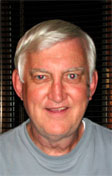
Past Editorials
Click here!
|
|

|
August 19, 2002
Past Editorials Click here! |
|
Home |
Alumni |
Home |
City Hall |
Events |
History |
Schools |
Map |
Library |
Stories |
Genealogy
Community Center | News | Chatter box | Email | Photos | Satire | About Minonk | Issues |
|
About Town Barth Weistart  Mr. Weistart is a Minonk native and has done extensive research on the history of coal mines in this area. His father Frank was a coal miner and also a union representative for the United Mine Workers in Minonk. |
I just heard that there is a proposal to permanently name Sutton's Park. That is the common name given to the strip of land that graces the northern approach to Minonk but it doesn't represent the true nature of the property nor adequately present the historical heritage of Minonk .
This article has nothing to do with the Suttons per se. They were our neighbors living across the alley from us. I delivered the Streator Times Press to their front door for many years and was their official lawn mower. It was always good to work for someone who could pay on time. Sutton's Park was the property fronting miners homes. The homes were owned by the coal company and rented to the miners. The larger buildings housed two families. Each family had two rooms upstairs and two downstairs. Each upstairs rooms would be rented to generally 4 single miners. The family would live in the two downstairs rooms. The wife would prepare breakfast and supper and pack a lunch for all the miners in the house. This had to be done in order for the family to meet the rent and for the single miners to have a place to stay. Some miners had come to America hoping to earn enough money to bring their wives and children over. They conserved by sharing a room with 3 others. Food had to be bought at the Company store if the miner wanted to continue working in the mine. Food could not be bought from the farmers at lower prices. If a wife was seen buying at another establishment, the miner was warned. Miners were paid for the weight of lump coal. When coal was brought up out of the ground it was passed over a screen. The miners were not paid for the coal that fell through the screen even thought it was sold as was the lump coal. For some 80+ years, the people weighing the coal were company employees and not miners. A most common complaint was about the short weights registered which reduced a miners pay. A miner could mine around 3 tons of coal a day. They were paid as little as 68 cents per ton. That's a little over $2 per day. Each miner had a helper who shoveled the mined coal into cars for transport to the surface. The helpers were paid by the miners from their daily earnings.
|
It's easy to see that the miners were not always treated fairly. But don't you have to be fiercely proud of these people? They came to what they were told was a country of opportunity. They were abused, worked where the sun never shined supplying the fuel for a nation, breathed air that brought them a painful and early death, and they raised families, some of whom grew up to be doctors, lawyers, and such. The papers didn't referred to them by name but as pollocks, germans, dagos, and niggers. But they weren't slur name people. They were just people trying to make a better life for their families.
Many of the miners didn't stay in Minonk. When the first mine went bankrupt in 1902, the paper reported that 400 miners left town. Sutton opened the new mine a few years later with far fewer miners. The heritage of the "park" land had already been determined by the miners who had toiled at that place. Minonk had been one of the first mines opened in the near vicinity making mining a significant part of Minonk's heritage. I visited Pennsylvania anthracite coal country this past summer.They have reconstructed coal towns, coal mining museums, coal miner's parks, preserved slag piles, and underground mine tours. These people are proud of their coal mining past (as are the many tourist that visit these sites). Naming a park after a person is a losing proposition. The person dies, the family moves, and everyone forgets. I would be surprised if even a few under age 30 could tell us who the Suttons were. A name that will be recognizable in the future and will highlight Minonk's past is needed. Look at your family histories. There is a good chance that if you have been associated with Minonk during your lifetime that your families grew from either those who first "broke sod"(plowed) of the virgin prairie of Illinois or those who were miners. These people made Minonk. I urge you to recognize the generation of people who were willing to work 500 feet underground to provide fuel for homes and the industrialization of America. Be proud of who they were, what they did, and the part Minonk played in this time. Consider naming this piece of land after those who toiled for it and on it. Recognize it as the MINERS' PARK. |
| To reply to this editorial please send your comments to duphoff@minonktalk.com. Your letter will be published in the email section. Viewers are welcome to submit a guest editorial. |